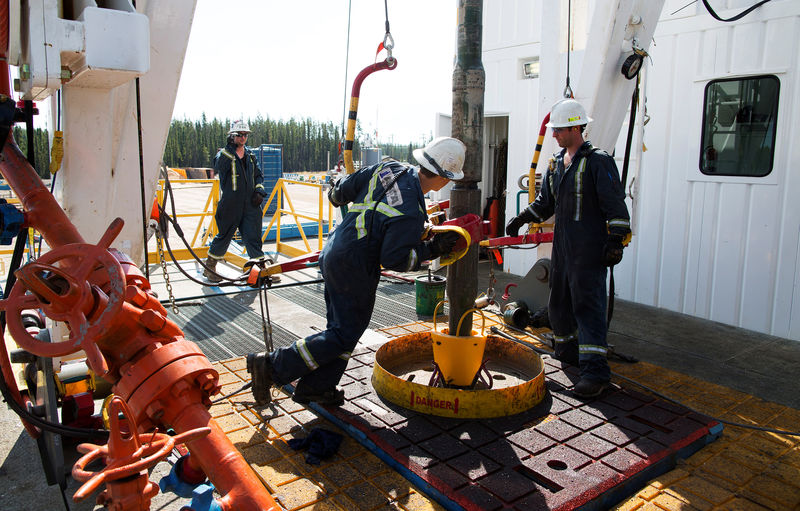By Peter Nurse and Kim Khan
Investing.com - Oil markets headed higher Wednesday, rebounding as positive news from trials of a potential treatment for the Covid-19 virus fostered hopes of a quick rebound in fuel demand from the travel and leisure sector.
Gilead Sciences (NASDAQ:GILD) said it was "aware of positive data" emerging from the National Institute of Allergy and Infectious Diseases’ study of its antiviral drug remdesivir for the treatment of Covid-19. The company said results showed it benefited patients who took the drug at an early stage of the illness, although later-stage patients responded less.
In addition, a smaller than expected rise in U.S. oil inventories of 9 million barrels took some pressure off the front-month contracts, which has seen selling from dwindling storage space for crude.
“It appears like curves are being flattened everywhere and the curve on crude stocks’ build is the latest to experience this phenomenon, declining from the previous week’s 15-million-barrel jump,” Investing.com analyst Barani Krishnan said.
At 10:45 AM ET (1405 GMT), U.S. crude futures traded 34% higher at $16.59 a barrel, while the international benchmark Brent contract rose 8.6% to $24.70.
In the U.S., the world’s largest consumer of crude, an increasing number of U.S. states start reopening their economies as the administration ramps up the number of virus tests available, and this is being matched in Europe.
This is helping the market rebound, to a degree, after losing more than a quarter of its value over the past two days amid concerns prices may again drop below zero and as investors and a major fund exited the June contract - there were 318,000 open positions as of Tuesday, with 15 sessions left before expiration. May WTI had 610,000 at the same point before expiry.
But oil inventories rose by a beleow-trend 9 million barrels for the week ended April 24, the EIA said. That compared with expectations for a build of about 10.6 million barrels, according to forecasts compiled by Investing.com and down from an average of about 16 million barrels in the past few weeks.
Gasoline inventories unexpectedly sank by 3.7 million barrels, versus forecasts for a rise of about 2.5 million barrels. Distillate stockpiles rose by 5.1 million barrels, compared with expectations for a build of about 3.6 million barrels.
Stockpiles at the Cushing, Okla. hub rose by 3.7 million barrels versus 5 million the week before.
“That’s a relief of sorts for anyone watching the Cushing numbers to guess on how long it takes before the hub runs out of space altogether for physical WTI deliveries,” Krishan said.
“On production, the other big number everyone’s been looking out for, we have a 100,000-barrel-per-day decline, putting us finally at 1 million barrels from the record high 13.1 bpd in mid-March,” he added. “It’s still a pretty slow retreat but it’s the best we have for now, given how the EIA estimates these things.”
The headwinds to physical demand were visible in the latest U.S. economic data. Gross domestic product data showed the U.S. economy contracted by 4.8% in the first quarter. Shorter-cycle data strongly suggest that the second quarter is going to be even worse.
But market forces are exerting ever-greater pressure on producers. China’s three biggest state producers have announced they will slash their spending plans this year by a combined $19 billion, in the latest sign companies are having to take drastic measures to weather the crash in demand and prices.
Production cuts both inside and outside of the OPEC+ bloc are widely expected to help restore some kind of balance to the market in due course. Analysts at Morgan Stanley (NYSE:MS) said Wednesday they see WTI stabilizing at around $40 a barrel in 2021, with Brent around $5/bbl higher.
